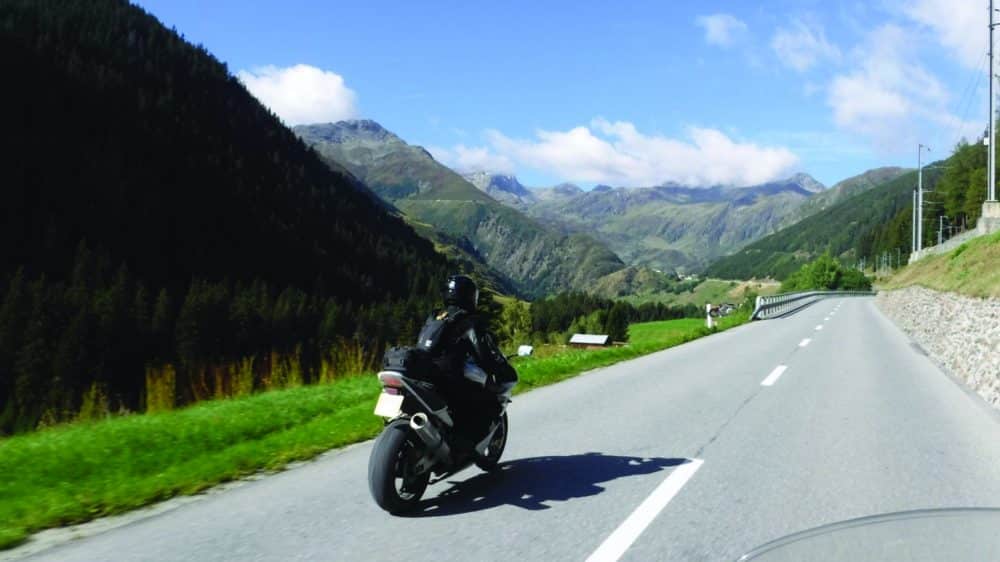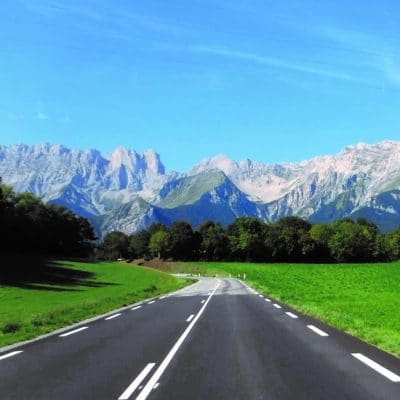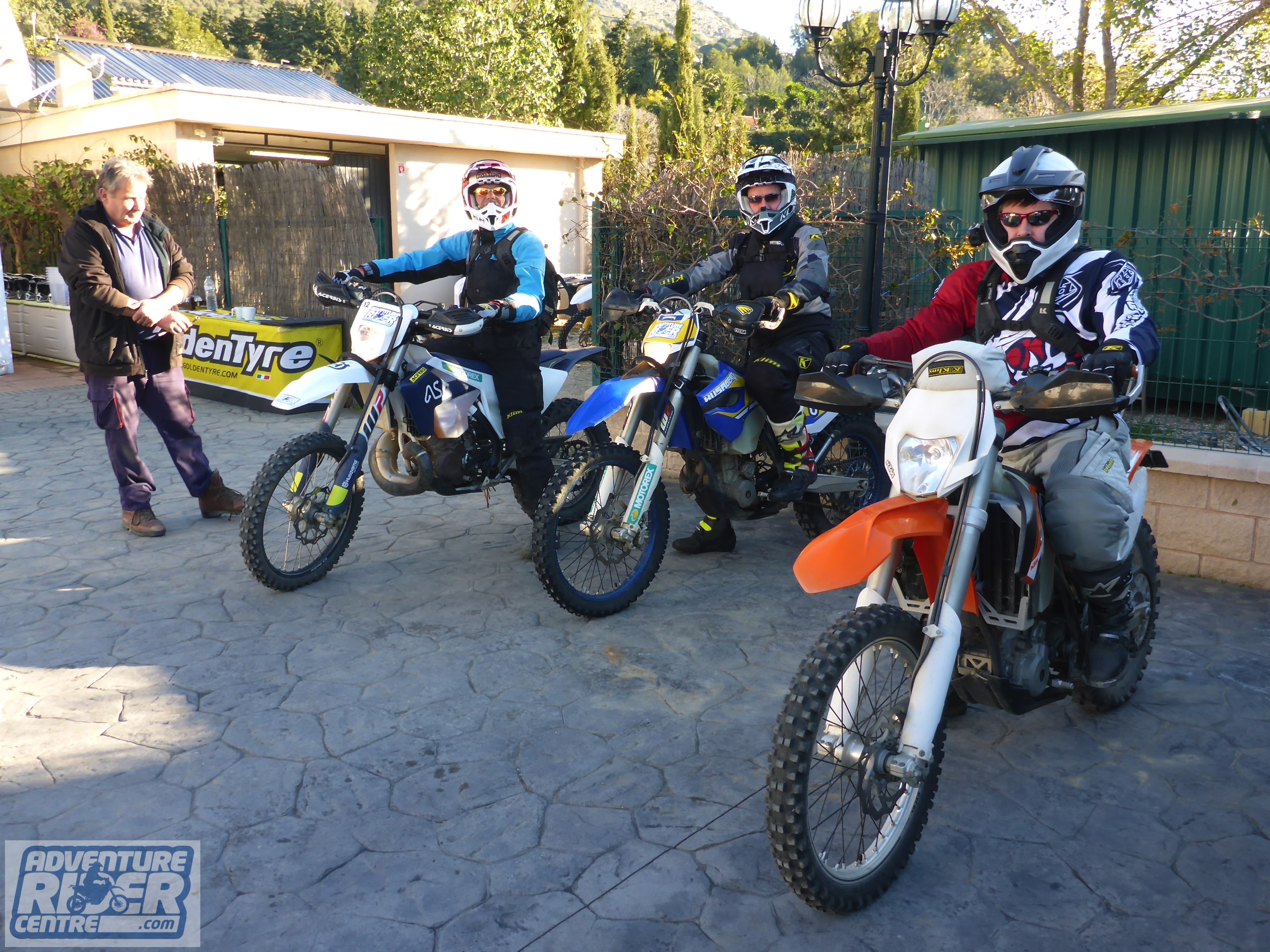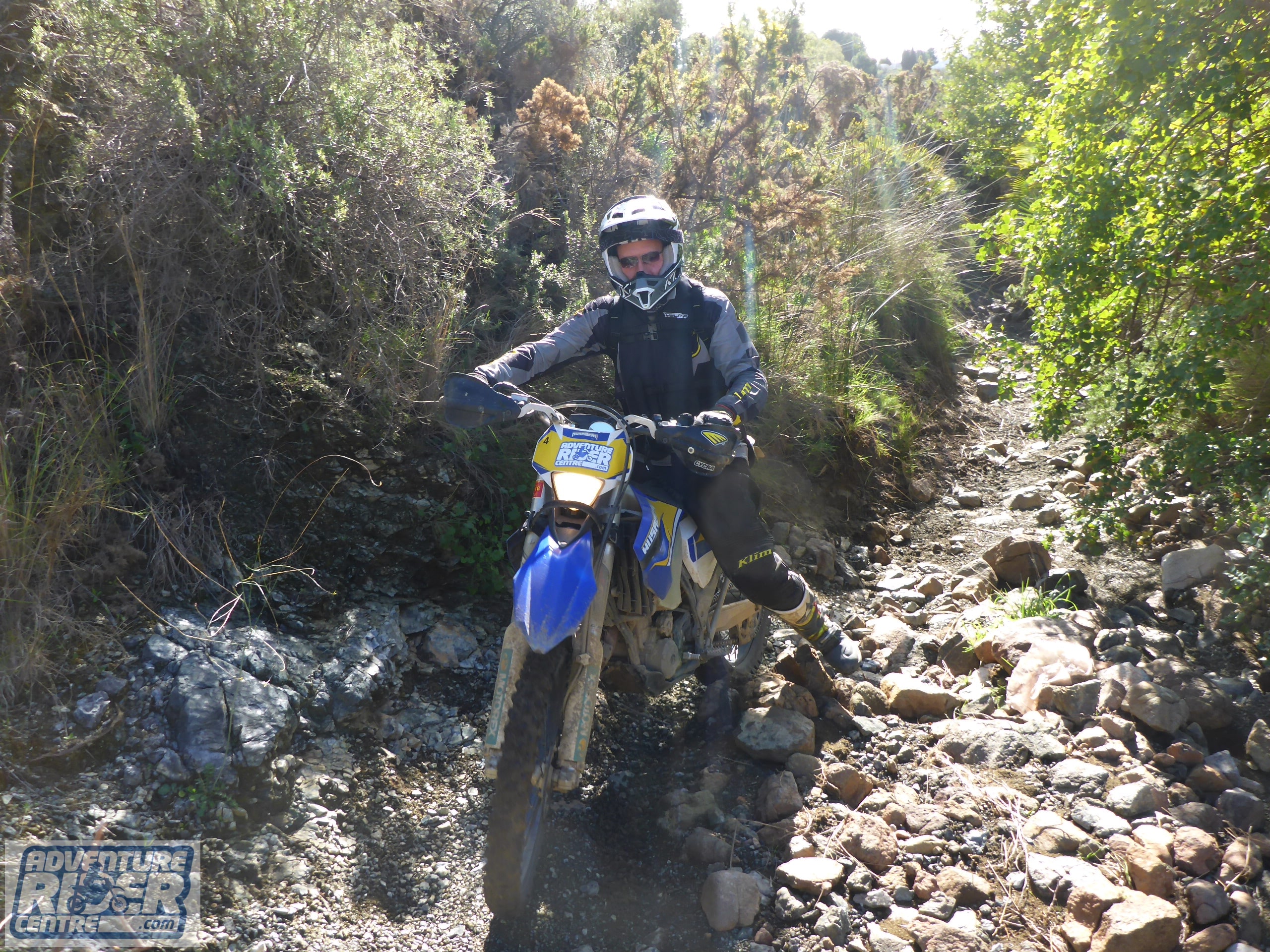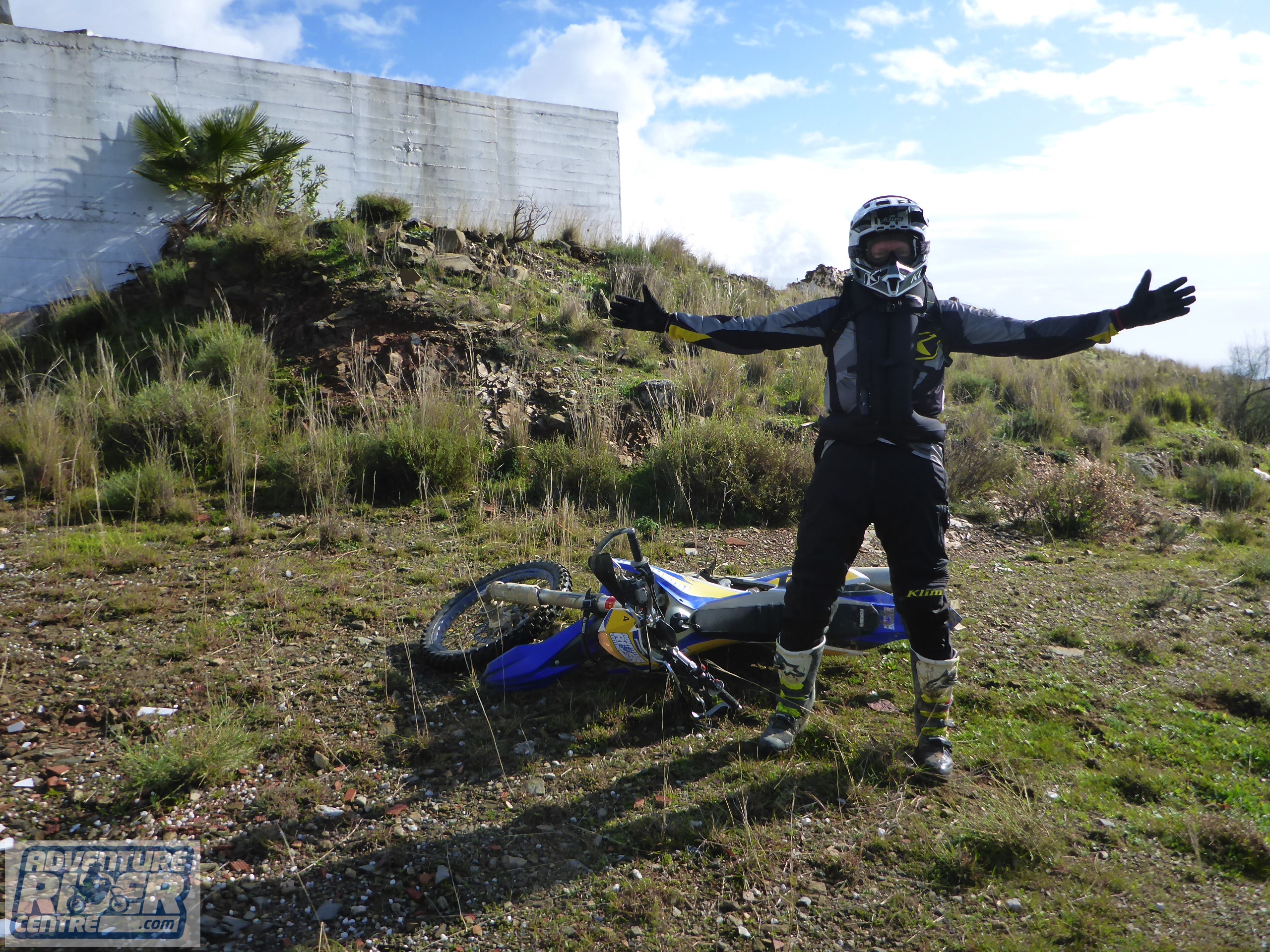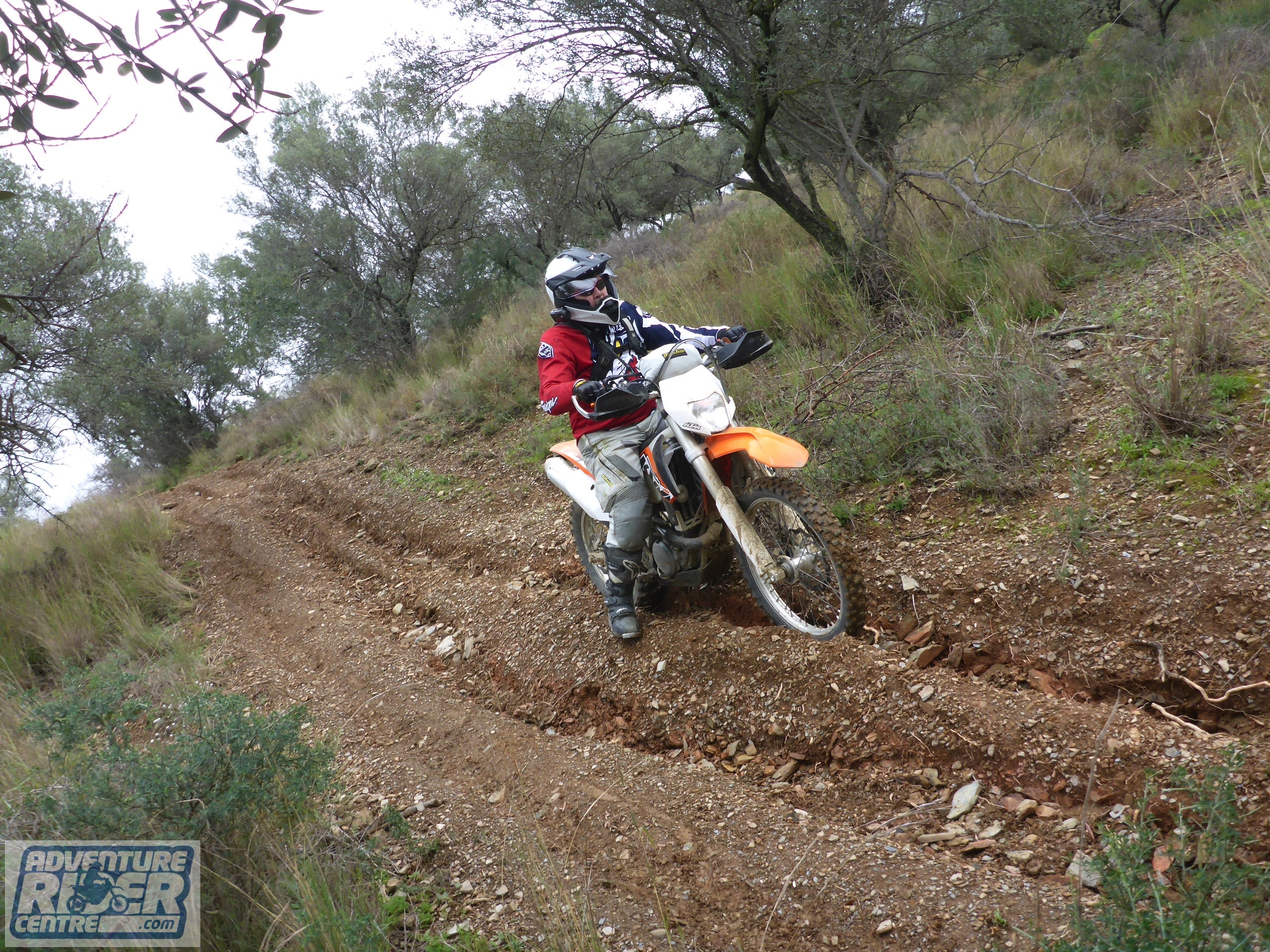Top Tips for First-Time Travellers
Since returning from a European motorcycling adventure last year, I’ve been trying to figure out how to turn my experiences into an interesting article for the magazine. A straight-up ride report (“…and then we carved through yet another dozen hairpins…”) doesn’t make for terribly engaging reading in my opinion. And as readers of my scribblings will know, I prefer to try to educate while I entertain, and there’s always something new for all of us to learn.
So let’s consider this a review of sorts; a short(ish) summary of an unconventional motorcycling adventure, where I challenge conventional wisdom and somehow convince my first-time touring partner into coming along for a non-stop, full-speed dash through the European countryside.
To give you an overview, this was a 3,500-mile, two-week all-inclusive sampler of European motorcycle touring, an opportunity for me to show my partner what she had been missing all these years during which her riding had been constrained to our rainy little island. This included French motorways, Belgian forests, the valleys of the Mosel, forests of Bavaria, derestricted German Autobahns, Austrian food, Swiss Alpine passes, Italian roadworks, French lakes, Spanish mountain gorges and a lot of McDonalds restaurants.
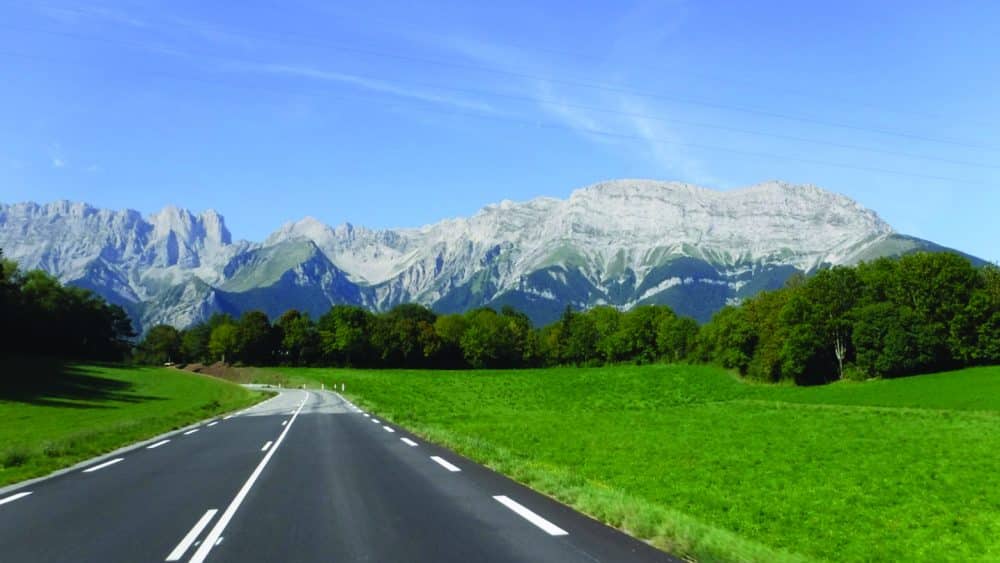
Cramming my favourite bits of Europe and the entire Pyrenees mountain range into a 14-day vacation that included my own brother’s wedding was a little ambitious. 300-400 miles a day quickly proved impossible, with an average of 250 more realistic, despite my creative interpretations of continental traffic regulations. Rural road maintenance crews love to dig up (and then abandon) the only route out of town with maddening regularity, but empty sidewalks will work at a pinch. We also learned that Honda Fireblades consume around a litre of oil per thousand miles, and had ample opportunity to discover that 10W40 is pretty much the same in any language.
Pay at the Pump is one of the greatest inventions of the current century, and our continental cousins have embraced it wholeheartedly. So have McDonalds, with their restaurants now featuring multi-lingual touch-screens alongside table service. This means that meal stops can be short and your interaction with the locals can be reduced to an absolute minimum.
The more sociable among you may be horrified at the idea of travelling thousands of miles to computer-order the same bland-tasting American hamburgers for lunch, day after day, but the truth is that rural Europe really leaves you no choice. The Spanish and the French seem to compete for who amongst them can shut down the longest during the afternoon and, if you are somehow fortunate enough to discover some dingy roadside café willing to feed a pair of strangely-dressed foreigners with a limited grasp of the language, they do so only with extreme reluctance.
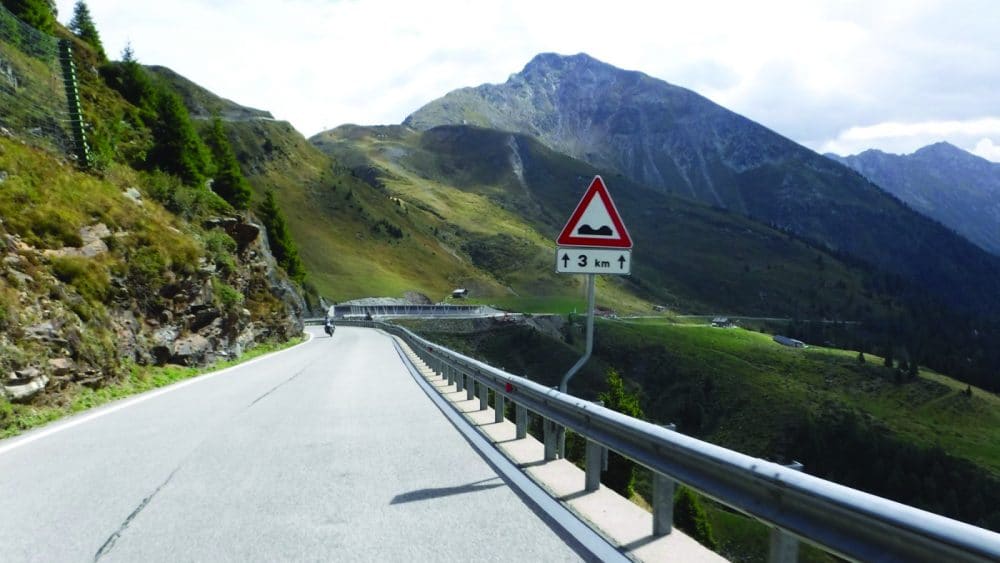
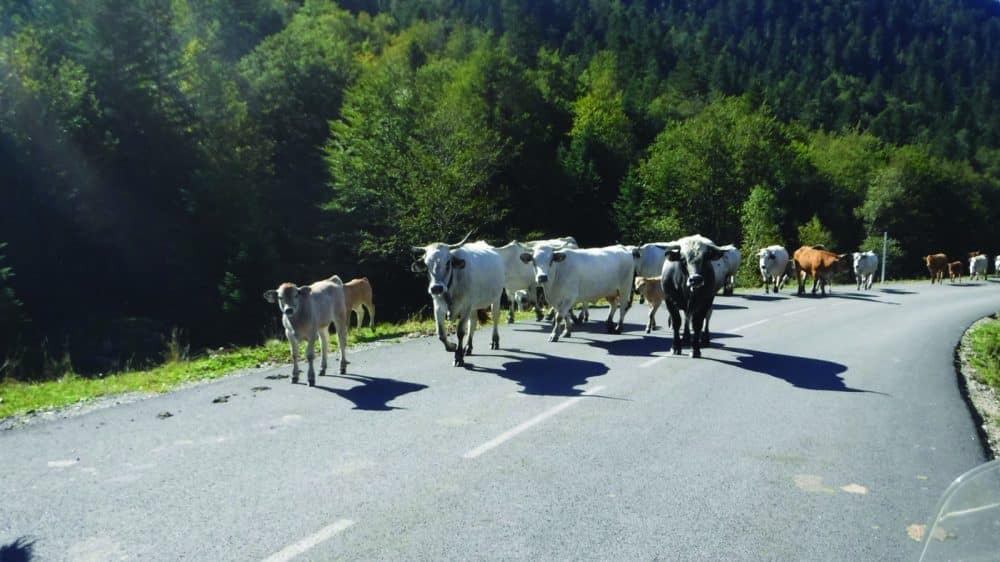
My purpose for travelling is to ride motorcycles on entertaining roads through spectacular scenery and the routes I chose clearly did not coincide with the European Good Food Guide. Google proved no help either, as outside of major cities what little information is available on the platform is inaccurate and incomplete, making the task of reliably locating any functioning establishment beyond multinational chain restaurants impossible.
And you know what? McDonalds isn’t so bad. The architects appear to have been competing with one another for the most interesting interpretation of the American fast-food staple, with regional variations in menus providing a modicum of culinary variation. The food is fine, the toilets are clean, the WiFi is good, and the air conditioning is extremely welcome. But most importantly, they’re open. And they have parking. And you can find them, easily, without having to detour to some traffic-clogged capital and traipse around baking city streets in a vain attempt to find somewhere that offers the bare-minimum of celiac-friendly menu options.
The Booking.com app means that you can pick your daily end-point during your afternoon coffee break, although first-time travellers should be aware of a few peculiarities. The French interpretation of the word Hotel is fairly broad and it is only after booking that it is possible to discover the latest allowable check-in time. This might be far earlier than you would expect and supremely unhelpful if you’re running late and still an hour away from the room you just paid for.
The following day we left Mandawa and headed for Bikaner, covering another good mix of road types and avoiding herds of camels. We were now really loving the Bullets, the big 500cc single, thumping away, exhaust burbling, plus the popping and banging on the overrun. We stopped off for a tour of the Fort of Junagarh then on to Bikaner, where we stayed in an ancient palace which now served as a 5 star hotel.
After a good breakfast of traditional Indian or European fare, we were back on our Bullets heading for the golden city of Jaisalmer, on the edge of the Thar desert. Dinner in the open roof-top restaurant watching the sun set on Jaisalmer Fort was spectacular. The fort looks like a giant sand castle rising from the sandy plains.
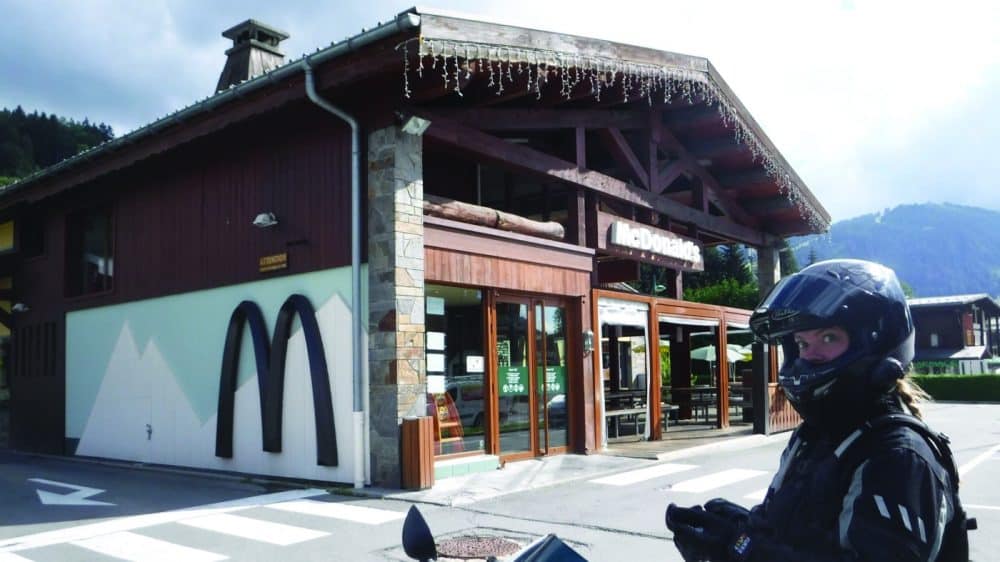
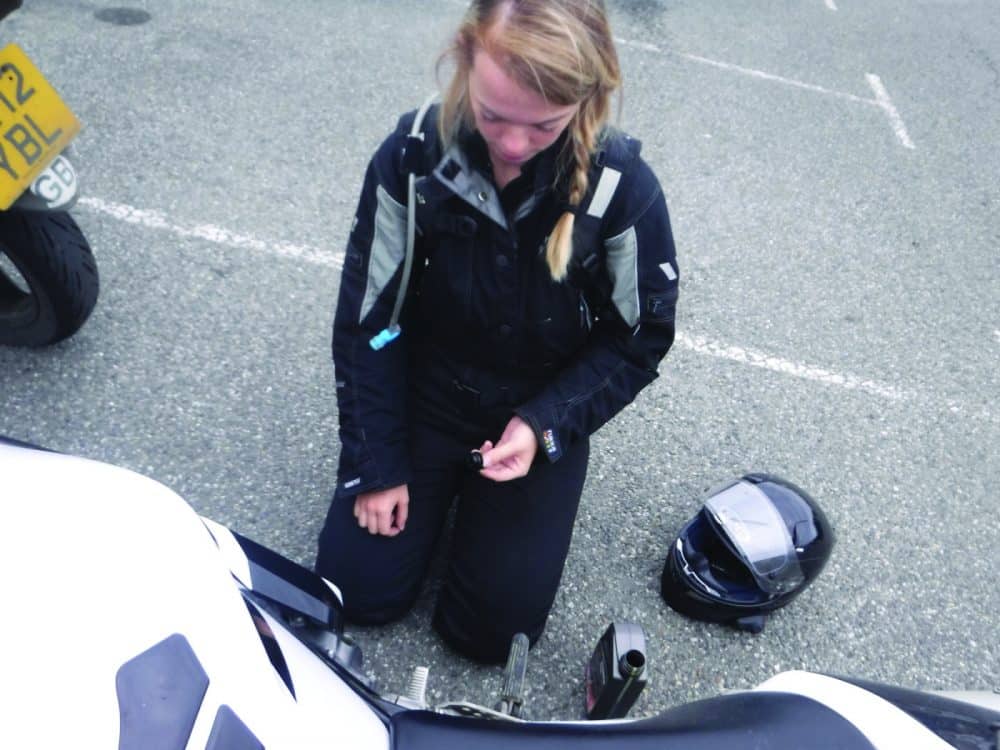
Breakfast Included is also subjective. In some places it’s a multi-menu banquet from 7am onwards, while in others you delay your departure only to discover you’d have been better off saving your money and opting for a petrol-station coffee & croissant instead. Our last hosts informed us upon check-in that breakfast wasn’t served until 9am – a full half-hour after our latest realistic departure time, should we still wish to catch our ferry. We left the room keys at an abandoned reception desk when we left. They’re just lucky I’d paid in advance before arriving as there was no-one awake to check us out either.
I do recommend picking somewhere that has an on-site restaurant, however. The couple of times we chose more characterful bed & breakfast options we got badly burnt when no alternative meal options were available in any nearby towns. The hotel’s own restaurant might not be the last word in quality or value but it’s better than cereal bars and bathroom tap water. I’ve decided to pack a can of baked beans and a tin-opener next time, just in case.
As for routes and riding, Europe certainly offers plenty of surprises. The observant number-plate spotter will note that while the British do not seem to venture much further east than France, the Dutch seem to have fled their own country en mass, with bikes and cars alike strewn across the entirety of German-speaking Europe. Petrol stations rarely sell anything other than E10, the 10% ethanol-fortified fuel that the continent switched to some years back. Those of you running newer bikes might notice a slight drop in fuel economy, while those running older machinery might notice it eating holes in your petrol tank and associated piping.
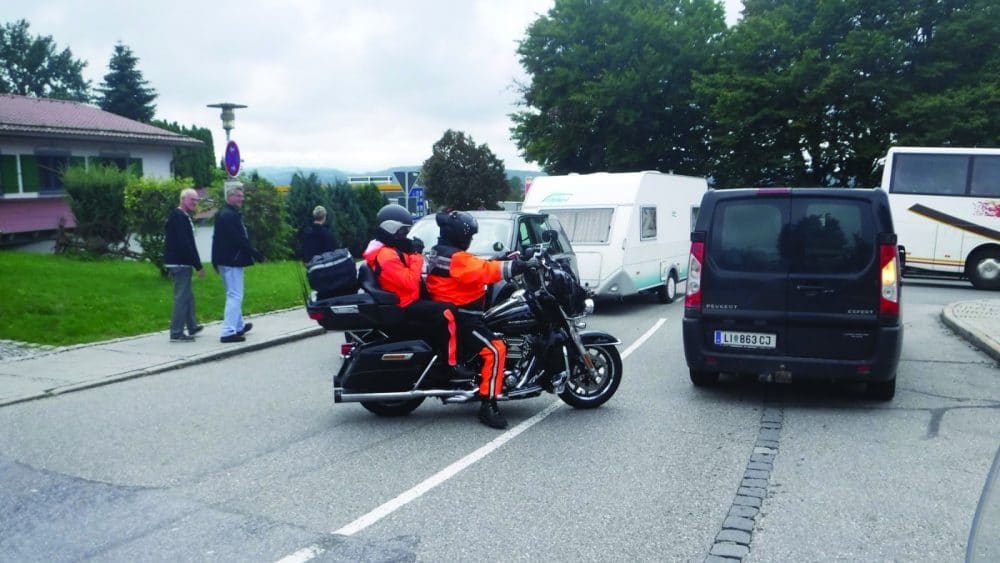
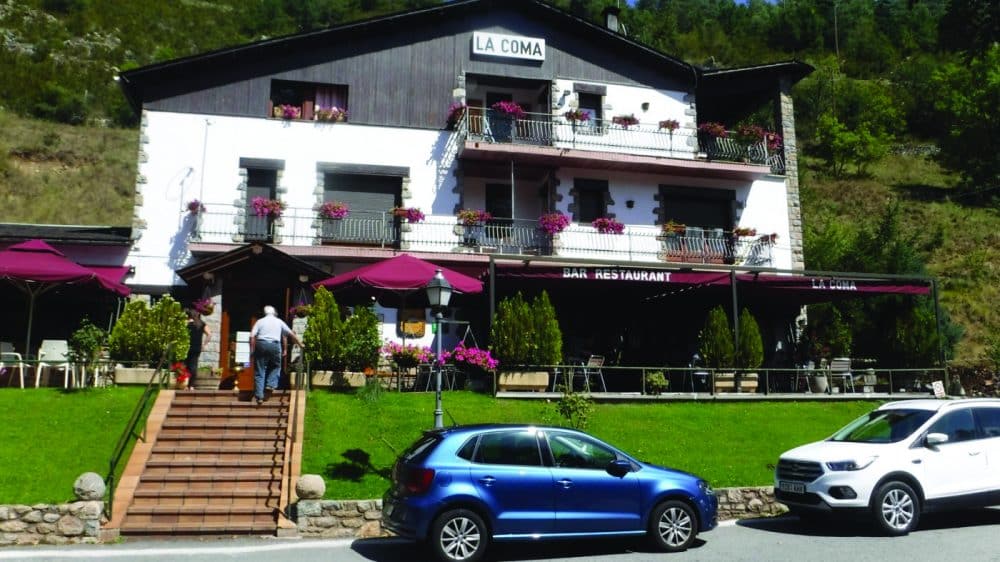
The Italians have an interesting way of discouraging speeding with, what I could only deduce were, speed-sensitive traffic lights. No junctions, no pedestrian crossings and they’d turn green again as soon as you’d stopped but if you approached them more slowly, they wouldn’t change in the first place – an interesting tactic, for sure. Speed cameras themselves are slowly spreading across the French countryside like an infectious disease, usually concealed and on otherwise perfectly safe roads. Fortunately the locals seem as unimpressed as I was, with the overwhelming majority having been comprehensively disabled through the generous application of spray paint.
Mountain passes, both in the Alps and Pyrenees, can vary tremendously in terms of traffic, road surface, severity of corners and width of carriageway. If a pass crosses a border, then you can often tell when you’ve moved into a new sovereign land not merely by noting the abandoned check-points, but from the sudden change in tarmac quality. Italy – I’m looking at you.
You might also find that a pass that was all flowing, well-telegraphed bends on smooth, wide, empty tarmac on one side of the mountain becomes a treacherous, single-width goat path with, in many cases, actual goats waiting for you on the other side of a blind hairpin. Cows, too, are frequently to be found enjoying the tarmac and evidently doing their best to cover every square inch in dung as they move up the mountain.
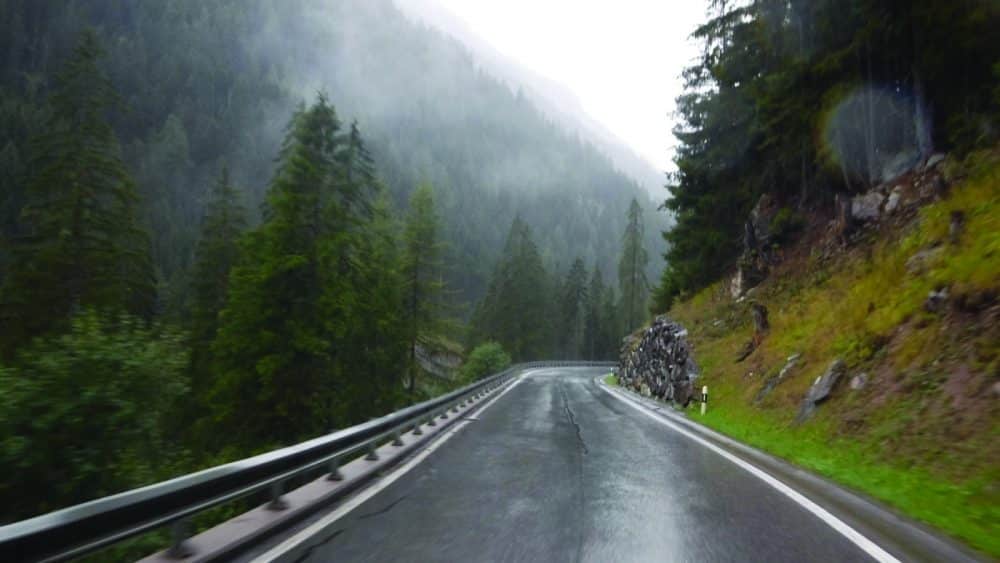

Tunnels are frequent and sometimes many miles long, offering a welcome respite from hot or wet weather. But beware – the smaller ones sometimes feature unexpected livestock seeking shelter from the rain, whilst the larger tunnels often sport surprise toll booths on the other side. The remote operators of these booths apparently subscribe to the very American idea that getting a foreigner to understand you is merely a matter of shouting more loudly at them, in this case through a tiny little speaker. It’s ok though; after a while they seem to give up and let you through anyway.
Choice of bike is important for a trip like this. A 100-mile tank range is insufficient, as taking the scenic route can easily mean fuel stops are necessarily further apart. Sportsbikes – even those with raised bars – simply aren’t comfortable for consecutive 10-hour riding days, and the rest of Europe seems to agree. We saw just two fairing-clad travellers in two whole weeks on the road. BMW has half the market sewn up with R1200GS’s littering the slopes and K1600’s and S1000XR’s dotted around liberally to break up the monotony. Harley-Davidson is clearly doing very well in Europe, with an easy third of our fellow bikers having chosen the bar-and-shield brand for their twisty, mountain adventures. Honestly, it was impressive to watch – limited ground clearance simply means your lines through the hairpins have to be spot-on.
But adventure bikes of all shapes and sizes are clearly the weapon of choice for travellers of all stripes. I finally discovered where all of Suzuki’s European V-Strom 650’s have been hiding – they’re all in the Alps, making the absolute most of their modest horsepower to embarrass their better-heeled brothers and sisters. More than once I wished I could hand out TVAM business cards as I overtook well-financed yet dangerously-unskilled riders on my way up a mountain. With cornering lines like that, they may well find their ride back down the mountain takes considerably less time than they might have previously expected.
No matter what you ride, make sure that you have a firm set of low-speed riding skills under your belt before you venture into these mountains. Some hairpins are closer to uphill u-turns than any of the bends you’ll encounter on our comparably flat little island. Also, ensure you have enough power and confidence to execute overtakes on relatively short pieces of road, or you may find a wonderful stretch utterly ruined by the maddeningly slow Fiat or Citroen blocking the view ahead.
Being comfortable on loose surfaces would be advantageous too. More than once we found the Spanish mountain roads strewn with gravel and at one point the racetrack-smooth tarmac simply stopped mid-way through a fast right-hander, becoming a genuine hard-core gravel track. My V-Strom took it all in its stride, but Jasmine on board her Fireblade was unamused.
Others may disagree, but I also recommend that you stick to a full waterproof textile suit for a trip like this. Leathers and waterproofs may be your preference for an unavoidable shower, but up in the mountains it’s easy to be caught by surprise. In the space of ten miles we went from sitting outside a café drinking hot chocolate in the sunshine to peering through dark clouds at flooded roads on the side of a mountain. If your default gear is already waterproof you can just ride on but anyone who needs to stop to get changed will already be soaked by the time they find somewhere safe to pull over. Heated grips can be most welcome, even in September.
Down in the foothills of Spain however, you’ll wish they were electrically cooled as well. Even in mid-September, and even in the hilly north of the country, we were consistently suffering high 20’s, with a genuine 33ºC predicted for the day after we set sail from Bilbao. A friend from Portugal had previously advised me that, should I wish to venture any further south, I should restrict my plans to early spring at the latest, and I think I can see why.
If you’ve never travelled in Europe, you’ve really got to get out there. TVAM runs a number of trips each year, with several specifically designed for first-timers to get their first taste of riding on the right. And it’s really very easy, and relatively inexpensive – the Eurotunnel is around £80 return for bikes and even less if you’re going for five days or fewer. Weekend trips are doable and your range only increases if you can get a Friday or a Monday off work too.
Travel light, take a toolkit, keep your smartphone charged up and enjoy Europe before they decide they don’t want us difficult Brits visiting anymore.
Nick Tasker
First published in Slipstream July 2019
